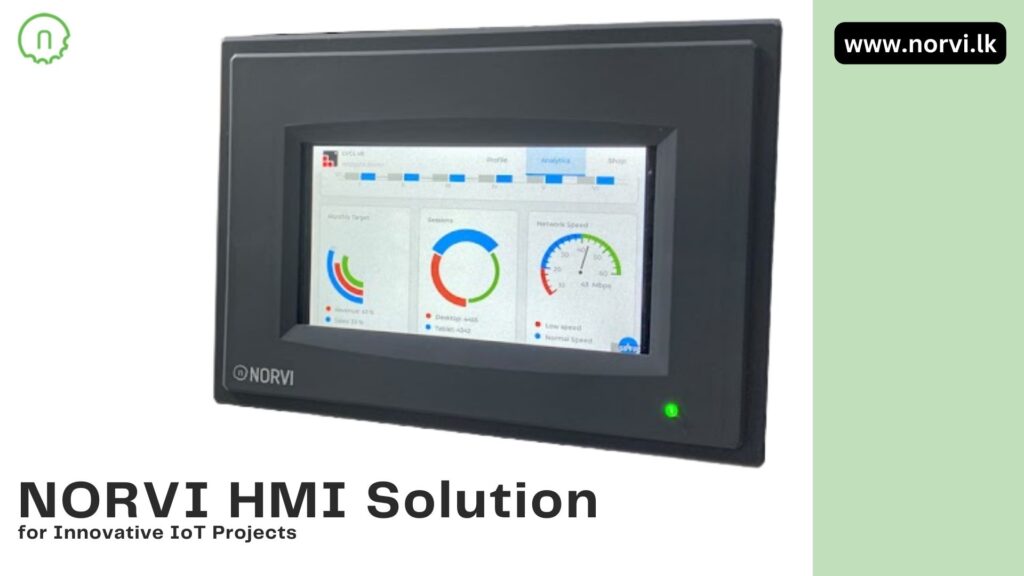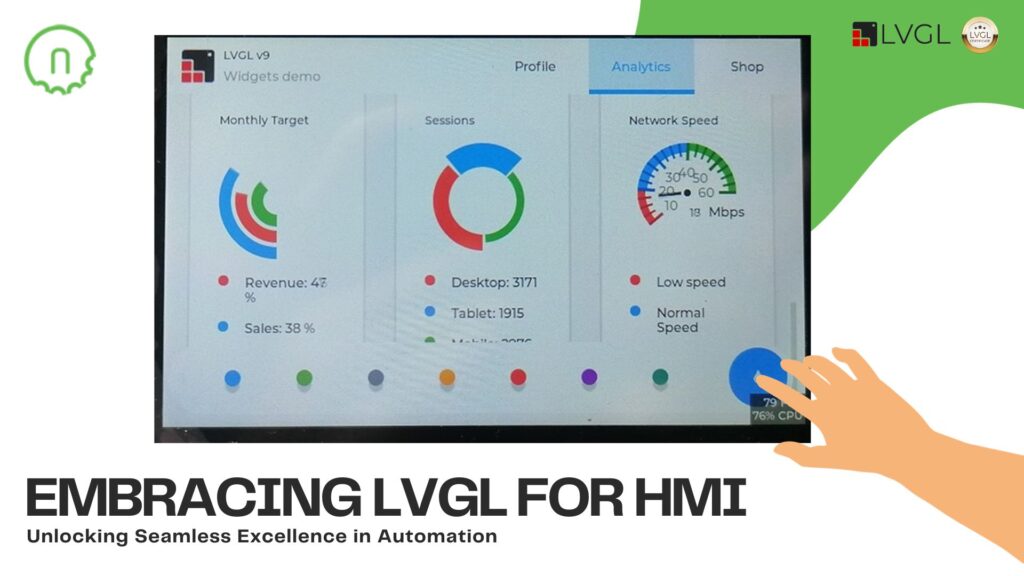
Discover the significance of LVGL for HMI in driving automation initiatives across industries. Explore why LVGL stands out as the ideal choice for crafting efficient, user-friendly interfaces. Dive into the world of LVGL HMI for a seamless automation journey.
In the modern landscape of automation, the role of Human-Machine Interfaces (HMI) is becoming increasingly crucial. As industries seek more sophisticated and user-friendly interfaces to control and monitor automated systems, the choice of the right graphics library becomes imperative. LVGL (Light and Versatile Graphics Library) stands out as an efficient and adaptable solution for crafting robust HMIs that drive the automation journey across diverse industries.

LVGL, an open-source graphics library, has gained widespread recognition for its versatility and scalability in developing user interfaces for a multitude of devices. Its lightweight nature and flexibility make it an ideal choice for creating visually appealing, responsive, and intuitive interfaces, ranging from small microcontrollers to advanced touchscreens.
LVGL for HMI: The Advantages for Automation
When looking to why LVGL for HMI, many advantages which comes with LVGL is essential to explore.
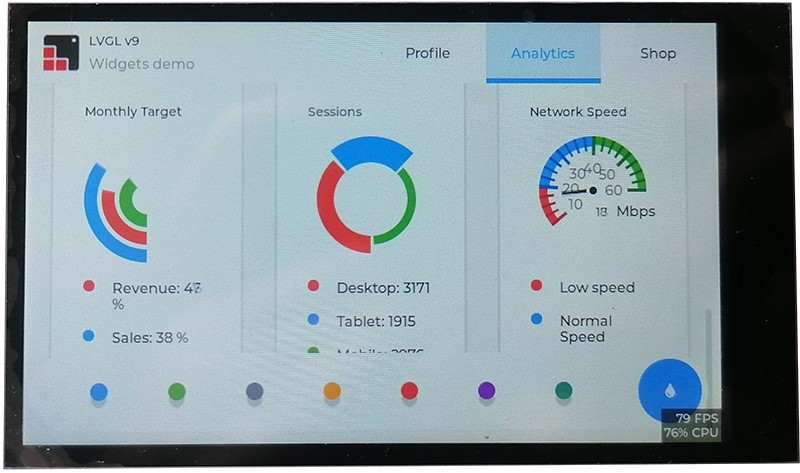
1. Versatility and Flexibility
LVGL’s adaptability across various hardware platforms and operating systems allows developers to craft HMIs that seamlessly integrate into existing systems. This versatility ensures a smooth transition into automated processes across industries, facilitating efficient operations.
2. Performance and Efficiency
Efficiency is the cornerstone of automation, and LVGL excels in this aspect. Its optimized codebase ensures swift rendering and responsiveness, essential for real-time monitoring and control in automated systems. This high performance enhances user experiences and operational efficiency.
3. Customization and User Experience
LVGL offers a wide array of customizable features, including widgets, themes, and animations, enabling developers to tailor interfaces precisely to meet specific industry needs. This customization capability enhances user experiences and ensures that HMIs align perfectly with desired functionalities.
4. Active Open-Source Community
One of LVGL’s strengths lies in its robust open-source community. This active network of developers continually contributes to the library, providing regular updates, bug fixes, and new features. The community support ensures that users have access to the latest advancements and ongoing assistance in HMI development.
Embracing LVGL for Future Automation Initiatives
LVGL (Light and Versatile Graphics Library) serves as a unifying force across diverse industry domains, seamlessly spanning from industrial automation to smart home devices and automotive systems, providing a consistent and reliable HMI solution adaptable to diverse industry requirements. Its inherent flexibility and robust features provide a consistent and reliable Human-Machine Interface (HMI) solution adaptable to the unique requirements of various industries.
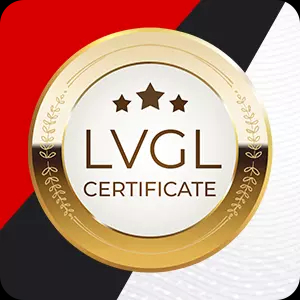
In the realm of industrial automation, LVGL’s capabilities shine brightly. Companies are able to receive the LVGL Certificate and get benefits to change the game too.
Its versatility allows for the creation of intuitive and visually appealing interfaces for industrial control systems. Whether it’s operating machinery, monitoring processes, or managing complex workflows, LVGL empowers developers to design HMIs that are both functional and user-friendly. Its ability to integrate with different hardware platforms ensures compatibility with a wide range of industrial devices, enhancing efficiency and productivity in manufacturing and automation processes.
Moving towards smart home devices, LVGL for HMI continues to demonstrate its adaptability. From smart thermostats to home security systems, LVGL enables the development of sleek and interactive user interfaces that seamlessly blend into the modern home environment. Its customizable widgets and graphical elements facilitate the creation of intuitive controls, allowing users to effortlessly manage and monitor various aspects of their smart homes.
In the automotive industry, LVGL plays a pivotal role in crafting advanced infotainment systems, instrument clusters, and navigation interfaces. Its ability to handle high-resolution graphics and animations ensures a visually compelling and responsive experience for drivers and passengers. LVGL’s adaptability to different screen sizes and hardware configurations makes it a reliable choice for automotive manufacturers seeking to deliver sophisticated yet user-friendly interfaces within vehicles.
The consistency and reliability of LVGL for HMI solution across these diverse industries lie in its capability to provide a unified development platform. Its cross-platform compatibility, extensive widget library, and community support enable developers to create tailored interfaces that meet the specific needs and standards of each industry, ensuring a seamless and reliable user experience across industrial automation, smart home devices, and automotive systems.
In essence, LVGL serves as a versatile bridge, offering a common ground for HMI development, and its adaptability makes it an invaluable asset in meeting the varied demands of industrial, residential, and automotive sectors, fostering innovation and efficiency across these domains. Further refer.
Conclusion
The adoption of LVGL for HMI signifies a strategic move towards enhancing automation initiatives. It not only ensures efficient and user-centric interfaces but also future-proofs systems by allowing seamless integration and adaptation to evolving technological landscapes.
In conclusion, LVGL stands as a beacon for businesses aiming to embark on an automation journey that prioritizes streamlined operations, enhanced user experiences, and optimized productivity across industries.
Unleash the potential of LVGL and unlock a new era of user experience mastery! Dive into the intricacies of LVGL’s versatility, reliability, and seamless integration, enabling a consistent and powerful HMI experience adaptable to diverse industry needs.
Are you ready to elevate your interface game? Embrace LVGL and embark on a journey towards crafting next-level Human-Machine Interfaces that set new standards in usability, aesthetics, and performance. Don’t miss out on harnessing the positive power of LVGL for your HMI aspirations!
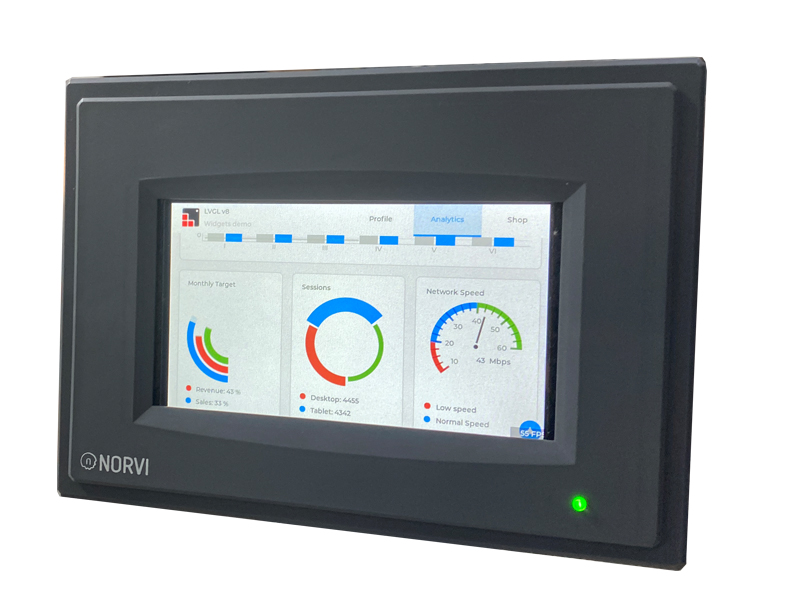
ESP32-based HMI which supports LVGL is now available to buy from NORVI.
Visit the Product Page or, Contact Us at [email protected]
Stay Connected to get updated news on LVGL for HMI: Facebook : LinkedIn : Twitter
Wanna know more about HMI from NORVI? Read below,
The Rise of HMI Applications: Ultimate Tech Landscape
Thriving HMI Technology: Future of Human-Machine Interface
Optimizing HMI Projects for Industrial Automation Success
#LVGL #HMI #UserInterfaces #Automation #TechInnovation #GraphicDesign #InterfaceDesign #UserExperience #SmartTechnology #IndustrialAutomation #SmartHomes #AutomotiveSystems #InnovationInProgress #TechnologySolutions #FutureTech #VisualDesign #UXDesign #SoftwareDevelopment #EmbeddedSystems #OpenSource #EfficiencyBoost #DigitalTransformation #VersatileGraphics #TechAdvancements #NextGenInterfaces #EngineeringExcellence #DigitalInnovation #HMI #UserInterfaces #UXDesign #InterfaceDesign #Automation #IndustrialDesign #TechSolutions #UserExperience #SmartTech #TechnologyInnovation #DigitalInterfaces #UIUX #FutureTechnology #Innovation #DigitalTransformation #Engineering #SmartDevices #Efficiency #UserCentricDesign #TechAdvancement #Digitalization #HumanCenteredDesign #InnovativeTech #AdvancedInterfaces #IntuitiveDesign #UserInteraction #InterfaceSolutions

